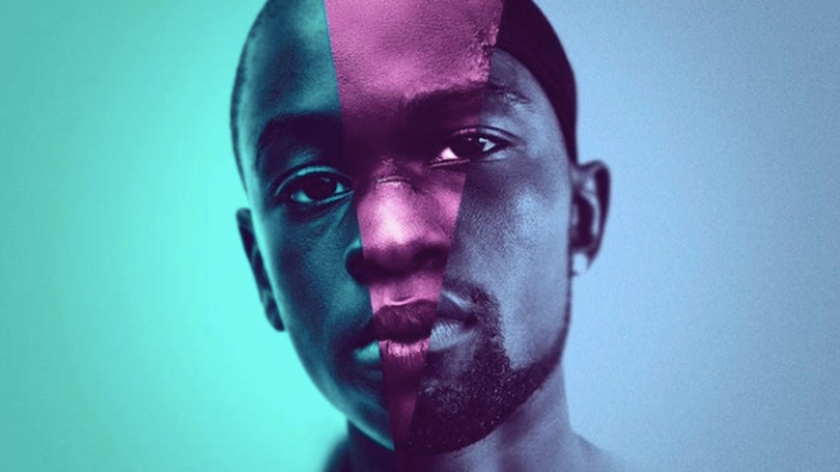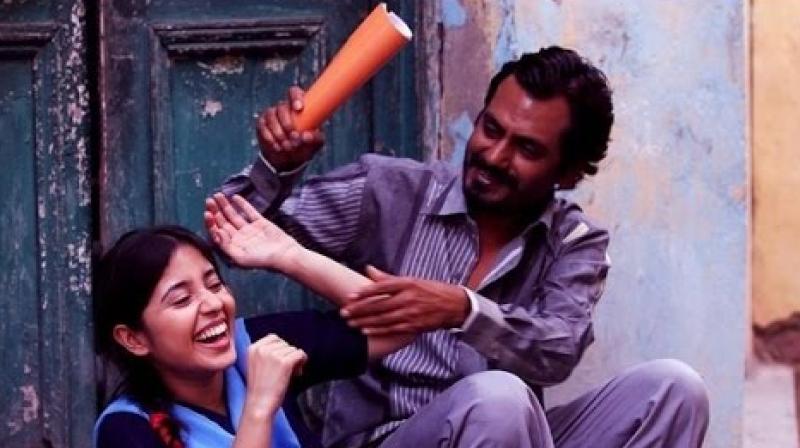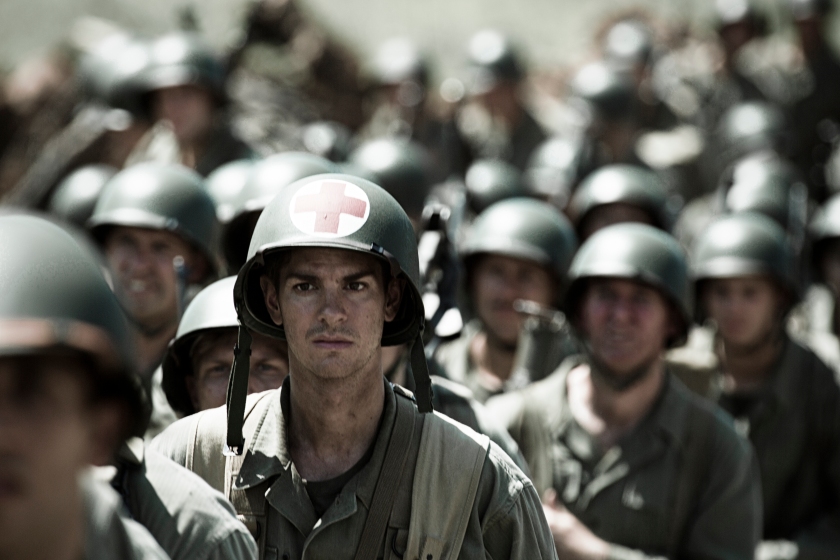#1 “Moonlight”

More than race, sexuality, bullying, poverty or drug use, Moonlight is about the sharp pain, the deep loneliness, that come from feeling like you don’t belong. From not knowing who you are. Or from being scared of who you want to be.
“At some point, you gotta decide for yourself who you want to be. Can’t let nobody make that decision for you”, says Juan to young Little. Yet the movie shows how choosing your own life is not really always your own choice, but also a choice of your circumstances. It was true of Juan, who despite presumably choosing who he wanted to be in life, was ashamed of being a drug dealer. And sure enough, it became true of Chiron, who may have chosen a similar life voluntarily, but that choice was as much about what his circumstances – a crack addict mother, a constant doubt about his identity, an unforgiving world of bullies, and finally criminal charges and jail time – drove him to become. This conflict between you choosing your life and your circumstances choosing it for you, came out beautifully in the scene where Juan the drug dealer tries to berate Paula, Chiron’s mom, for doing drugs.
Now this conflict may not be true of everyone. It may not even be true of most “black boys”. But this is a movie that’s an excellent example of not being frontally about any ‘issue’, yet depicting a unique story of lives constantly affected by a host of ‘issues’. Though from my distant social context, I may end up being guilty of extrapolating, but Moonlight makes me think that the reality of so many black lives is affected by the weight of these very problems – race, poverty, drug abuse, crime, sexuality – that probably makes a story like this resonate with many people in America “In moonlight, black boys look blue.”
Must also single out the performances. While Naomie Harris and Mahershala Ali are predictably great, the revelation is the child actors. I will never understand how someone who has seen so little in life can conjure up so much of it in a performance, but Hollywood proves otherwise year in and year out. Whether it be Quvenzhané Wallis in “The Beasts of the Southern Wild”, Jacob Tremblay in “Room”, or the entire cast of “Captain Fantastic” this year, we see time and again how movies with all the right ingredients in the world only have their powerful impact in the end because of the absolutely wonderful performances of some kids at their centres. In Moonlight, what affected me most was Ashton Sanders (15-year-old Chiron). His face, how he walks, how he looks at people – it just constantly screams the fact that he is lonely, lost and in pain. When he says “I cry so much, sometimes I feel I’m gonna turn into drops”, you hear him.
People are saying movies like Moonlight aren’t made often. I’m quite convinced.
#2 “Haraamkhor”

A monumental achievement of bravery and technique, the movie is only held back by a rather confusing turn of events in the final act that does not do justice to its excellent premise and otherwise intelligent treatment of a unique subject.
It deserves all the praise in the world for two things. First, its bravery. The very fact that this story was considered worth making on film is a huge achievement for Indian cinema, where we have a hard time taking basic creative decisions and even real-life wonder stories like “Dangal” occupy the status of being pleasant surprises. There is bravery also in the performances of Nawazuddin Siddiqui and Shweta Tripathi, the two leads, who in all probability had to enter a mental space completely alien to them – and morally reprehensible to most – in depicting the dark relationship between a 15-year-old girl and her fully-grown adult teacher. This kind of a role is probably what defines the challenge of the job of acting best: for one to occupy the mind frame of people one has likely never known, much less understood, and to then empathise with the same. It’s an achievement then, that the chemistry between Shyam and Sandhya was real. And the scenes where Nawaz had to get physically violent with people, particularly Shweta Tripathi’s character, had to have been much tougher to perform than they were to watch.
The second thing to be applauded about Haraamkhor is its intelligent treatment of a decidedly uncomfortable subject. It takes two young boys, and makes them the spectators to this spectacle of forbidden love (love?). Since one of these boys is in love with the girl himself, and since, being young boys on their way to adolescence, they are full of innocence, what the audience gets is a light-hearted, even humourous, way of easing into the weird story of a grown man having relations with a young girl.
But the movie is bogged down by a rather abrupt, confusing chain of events at the end, that leads to a tragic ending that then feels unearned. I didn’t understand exactly what happened that made Shyam beat up Sandhya. I didn’t understand exactly who all knew about Nawaz’s ‘tendencies’ by the end of the movie. But beyond matters of comprehension, what I did not understand was why the tragic ending of the film had to flow not from the human tensions at its centre, but from mostly just a small event in the plot about the boys turning Shyam’s house upside down and stealing his stuff. I know it can be argued otherwise, but the very fact that it wasn’t clear enough to be a gut punch reduces the merit of the film’s ending. So the final third of the movie becomes somewhat patience-testing, or at least disorienting.
For all other purposes, a fantastic movie.
#3 “Hacksaw Ridge”

The problem with telling an “incredible true story” is that it’s incredible, and it’s true. For you to really drive home how incredible, and un-normal, its people or events are, you need to work extra hard to get that across to us normal-minded folks in the audience living in our normal world. Which means that if you have to truly do justice to the story of a conscientious objector who never carried a gun into war but saved the lives of 75 of his wounded countrymen, you need to fulfill a tall order to make my mind really grasp how and why he did it.
In Hacksaw Ridge, both the ‘how’ and the ‘why’ are surely addressed, but not in a way, or not deep enough, that my mind would feel closer to understanding the incredibleness. We are shown the ‘how’ – Desmond Doss running back into hellfire to save lives even as all his infantrymen have withdrawn from battle constitutes the last 40 minutes of the film. We are told the ‘why’ – his religious convictions tell him not to kill another human being, and so he decides to be a medic and save lives. Yet at the end, I was left unable to bridge the gap between the astounding fact that a real man did these unreal things and what had unfolded onscreen.
The astounding fact remained an astounding fact to me, the film based on the astounding fact being unable to shed any more light on it or bring me closer to the mind of the astounding person at the centre of the astounding fact. It’s like watching a depiction of the amazing feat – and an excellent depiction at that – but not feeling you got any closer to understanding or exploring the amazing feat.
(For context – “Dangal” and “Florence Foster Jenkins” are two other incredible true stories from 2016, and though it’s mostly stupid to compare Hacksaw Ridge with them, it is worth saying that those movies cared enough about the incredible stories at their centre to dive deep and make you at least feel closer to the incredibleness – if not also understand it. Even something as extreme as “127 Hours” did that very successfully for me.)
This feeling is only made worse by occasional flourishes of melodrama and corny dialogue – the initial scenes in Virginia, the way the boys in the army talk and behave, the father disrupting the court martial to save his defendant son, the defeated Japanese army leader getting his head severed in slow motion, etc. I suppose, however, that one should be thankful there were much fewer of these things here than in Mel Gibson’s “Braveheart”.
Don’t get me wrong, though. It’s a damn good movie and worth a watch. Especially its war sequences. The detail, the arrangement and the editing on those scenes has to be right up there with the best. Last I saw this much detail (and clarity) in a depiction of the chaos and mindfuck that is wartime battle, was “Band of Brothers” and “The Pacific” – and those were TV series with significant advantages in terms of depicting detail. Hollywood SFX blockbusters could learn a thing or two from this film about their high-octane action sequences that make no sense and look nothing more than a celebration of explosions or lasers and blown-up cars and asphalt.
A good story to watch, but too incredible and true to be within the reach of its makers.